After cycling alongside the Great Wall for quite some kilometers we were ready to start ascending it. We had picked the village Gubeikou as our starting point from where we wanted to walk to the Jinshanling section.
Great photos from the Great wall hike The Great wall part 1 and The Great wall part 2
Our arrival at Gubeikou was one of surprise. The lonely planet talks about the small village Gubeikou. Actually there are two Gubeikou’s, there is the Chinese village on the north end of the tunnel and there is a sort of tourist village at the south end of the tunnel.
We arrived at the southern end really expecting an original Chinese village where we could spend the night and were a bit disappointed. We cycled around the northern end of the town but there were no accommodation options there, so back to the southern end again. Actually the tourist village was done quite nicely, but we always feel a little bit trapped when things are so obviously set up for tourism.
We ran into a western couple and asked where they were staying and finally decided we would stay at the same small guesthouse with inner courtyard that was run by a family. It is number 81 in the village on the left hand side across from the water stream. We ate homemade dinner and had a good nights sleep. Tomorrow we would be climbing the Great Wall!
It is amazing what the Chinese have done by building this Great Wall. All section of the Great Wall together (because it is not one long wall, but multiple walls and sections) make up more than 10.000 kilometers. The wall is huge, it is broad and very tall. Lastly, the wall is mainly built on mountain ridges in rough terrain, so building this wall is really a huge human challenge and execution of skill and persistence and therefore it has been named as one of the new manmade wonders of the world.
Gubeikou has a strong history being located in between two passes. It was a strategic fort to protect the capital in ancient times. Gubeikou, along with the passes at Shanhaiguan and Juyongguan, was a key strategic target in military campaigns since ancient times. Protecting these three passes was considered vital for keeping Beijing safe from the Mongolian nomads. In 1933, Chinese army fought against Japanese invasion troops in Gubeikou. In the four-month-long battles, over 5,000 Japanese soldiers were killed while 9,000 Chinese soldiers died. It was amazing that the ancient wall was still useful in World War II.
At the entrance of the Gubeikou tourist village there is a ticket counter. We had arrived the previous day when the counter was closed and were already in the village and just started walking from where we were. There is a small road that leads up to a temple and from there there is a path heading east. If you take that path it will lead you on top of the Great Wall. In this section the Great Wall is unrestored. There are some steps made into the Wall but much of the walking is on sand and gravel. It really gives an adventurous feeling to the whole expedition. We were walking up for quite a while and really enjoyed being high up on the wall with a great view. In all directions you could see watchtowers and left over segments of wall.
We knew that somewhere half way the Great wall hike we would have to make a detour to bypass a military section that is still part of the wall. The section that is closed off is marked very clearly with white signs and barbed wire. From here, coming from the west you take a northern route down to what is called spider valley. It actually makes the walk on the wall more diverse because we dropped into this valley and had different views of the wall, trees, flowers. Also there were some burial mounds, agriculture land and left houses. At one point we came across a house where the sell drinks and lunch. It would be possible to stay the night here for people walking the wall if they plan to do this. We had a refreshing drink and from here started heading up to join the wall again after the military section.
To get back up to the wall you pass through a gate underneath the wall. This is the official entrance to the Jinshanling section. Then take a right and there are some stairs leading up to the wall. From here the wall is restored and in very good condition, although the steps can be steep at some points. We made it to the next tower where a woman indicated that we should have a ticket. Always careful not to be tricked we were not sure what to do. She had a badge, but the whole situation did not look very official (and usual the Chinese make things look official). We paid here the 65 Yuan per person, got tickets and hoped they were official. The price was correct with the price at the entrance.
After seeing no other people on the wall all day, only two farmers in the valleys, all of a sudden there were more people on the wall. Still not much, I think we saw twenty other people on the Wall during the whole day and we have read reports of other sections closer to Beijing where it is almost impossible to have photos of the wall without other people in it. We were very happy with our choice for this section. The views of the wall and watchtowers were amazing.
We headed a bit further along and when we saw the cablecar we decided it was time for us to head down by foot on the path. It is possible to get on the wall by cablecar but we think it is nicer to get the full experience and feel how it must have been for the watchers in the towers defending the walls to walk up to the wall. During the day we had had multiple conversation about how the Chinese had organized their defense. How many people were there on the wall at any given moment? Where did they sleep? Did they walk or just stay in one place? How often did they need to fight? Very curious how they used the towers during the 16th century when this section was built and after!
We walked down to the main entrance gate of Jinshanling and found a ride with a Chinese couple who brought us to the main road, here we found another ride to Gubeikou and we were back at the end of the afternoon after a great day on the Great Wall.
Our legs hurt from the different exercise (walking instead of cycling) but we were very happy to have come so close by manmade history.



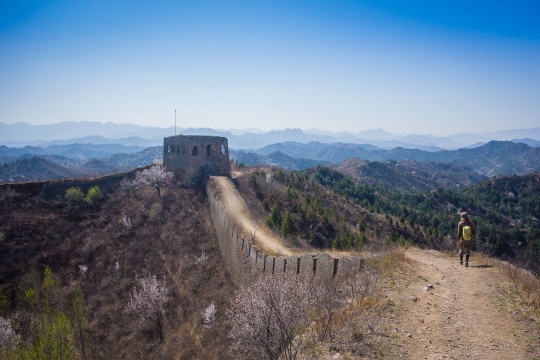

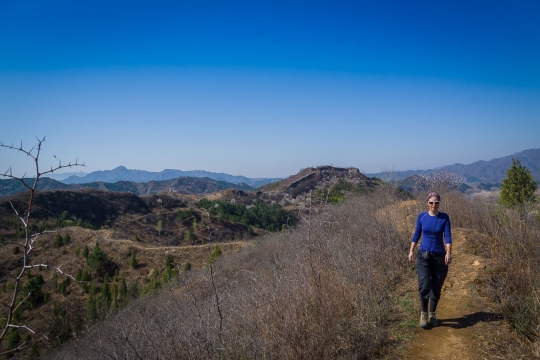
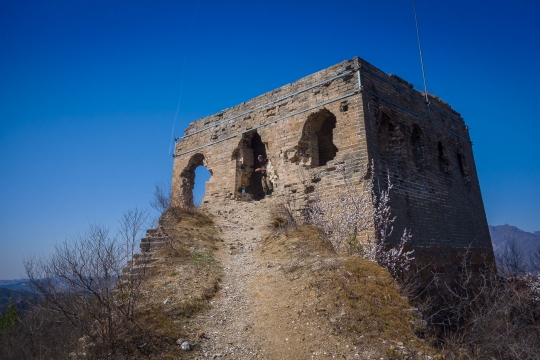
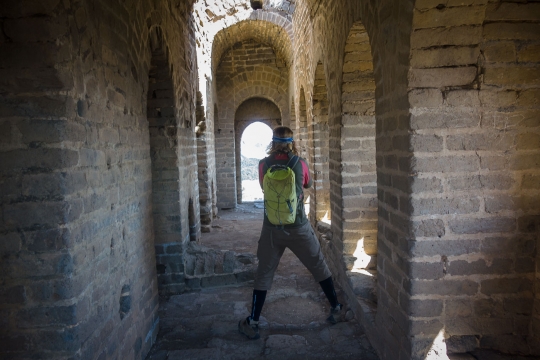

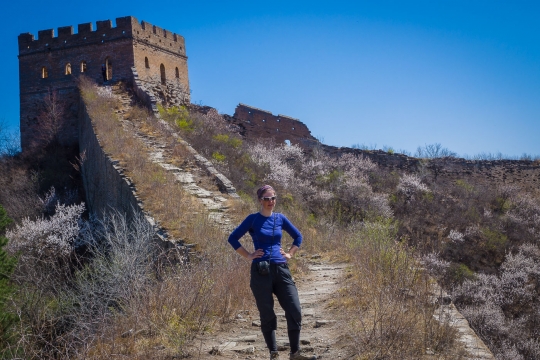
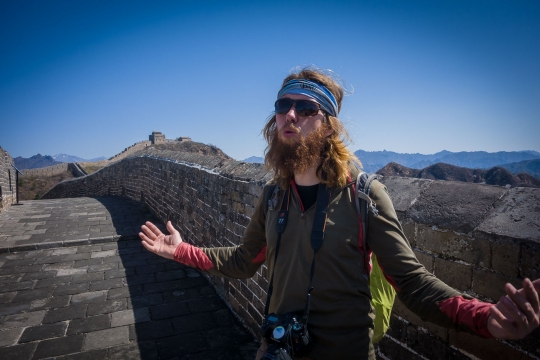
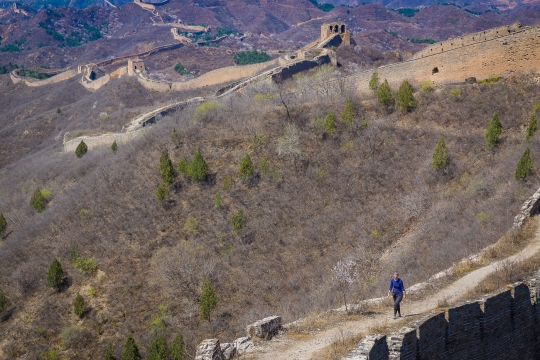

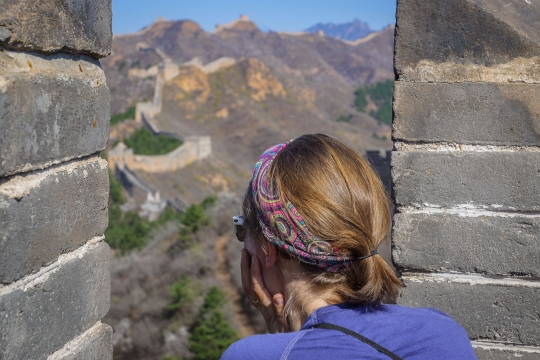
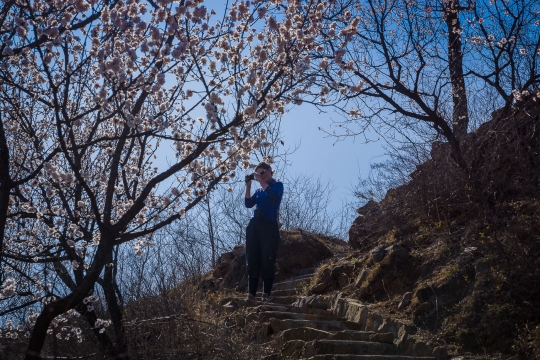




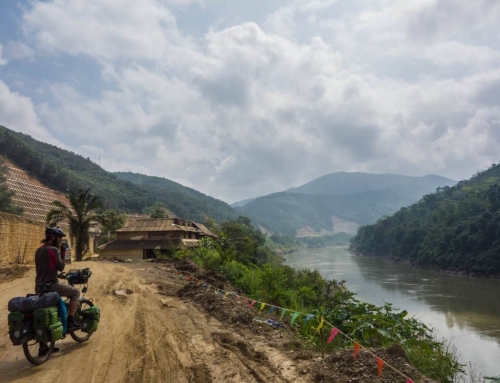
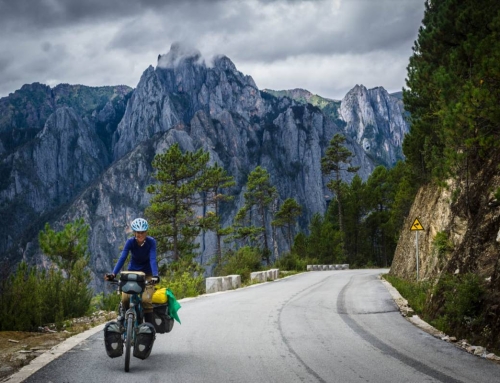
Leave a Reply